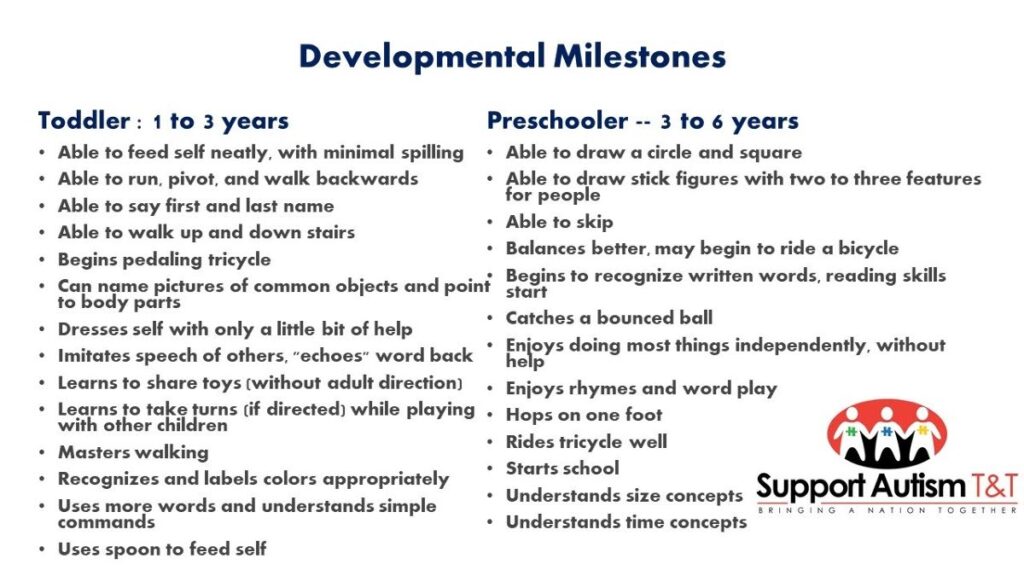Helping a child on the autism spectrum

DR RADICA MAHASE
Children develop at different rates but there are milestones that are used to monitor their growth and development. These are behaviours or physical skills seen in infants and children as they grow and develop. Every parent wants to know that their child is healthy and meeting all the required milestones in their development. It is expected that when a parent recognises signs of developmental delays, those can be traumatic and stressful for the parent.
As information becomes more accessible and special needs/disabilities are featured more in the media, more parents, as well as teachers, are recognising signs of developmental delays in children. While that’s the first step, the second step, getting help for the child, is an even more stressful experience. Most parents feel helpless and they don’t know where to turn to access resources for their children.
The first step is to get a professional opinion. That would mean taking the child to a medical doctor, a general practitioner (GP) for a check-up. The GP might recommend a developmental paediatrician for an official diagnosis. Here you have two options – you can make an appointment to see a developmental paediatrician at a public healthcare institution – outreach clinics at Point Fortin, Siparia, Couva and Princes Town and at the San Fernando General and Mount Hope hospitals. If the waiting time is too long (can vary from five to 12 months), and you can afford it, you can make an appointment to visit any of the developmental paediatrician in their private practices ($1,500 to $5,500).
Once your child has a diagnosis, you can start looking for various therapies, as recommended by the developmental paediatrician. Support groups can play an important role here as many parents become overwhelmed and don’t know where to begin to access resources. Reach out to other parents/caregivers, they can guide you, especially those who walking this path.
It is important that parents know that they are not the only parents who are trying to find ways to help a child with development delays or the only parent who has a child with a developmental disability. Sometimes parents may become depressed and frustrated and feel like they are unable to cope. Pay attention to your mental health – the period immediately after a child is diagnosed tends to be a very stressful one – parents may move from blaming themselves to a sense of hopelessness and then desperation when they cannot access resources and services for their children.

- Courtesy Support Autism T&T
One of the most difficult parts of the autism journey is educating a child on the spectrum. The ideal situation is to have your child mainstreamed, that is, getting your child in a regular school setting, but with a teacher trained in special-needs education or at least a teacher’s aide, if needed. In this way, the child will be able to participate in a regular academic and socialising environment. While this is the ideal situation, it is easier said than done in TT, as our Inclusive Education Policy has not been effectively implemented and many children are turned away from schools; do not have teachers trained in special-needs education or teacher’s aides.
If your child cannot get into a public school or is not thriving in that environment, or if your child is not at a developmental level where he or she will be able to manage in a regular school setting, then your other options are finding a private school or hiring a tutor to work with your child at home. Some parents/caregivers may also choose to home-school their children themselves. There has been an increase in the number of private schools in the last five years; the cost rangers from $100 to $1,500 a month. Again, this is where support networks can come in handy, as other parents can recommend/suggest schools, speak about their experiences and so on.
As parents/caregivers, you have to do your research on your child’s developmental disability and learn to advocate for your child. The key to helping your child is to recognise the signs early and get help early. Don’t wait for your child to "grow out of it" or to "get better." Go with your gut feeling – chances are if you think your child has developmental delays, you child might actually have developmental delays. So, no matter what the neighbour and your cousin’s friend and whoever tell you, go ahead and do your research, educate yourself and seek assistance for your child. And remember, “We may not be able to prepare the future for our children, but we can at least prepare our children for the future” –Franklin D Roosevelt.
Dr Radica Mahase is the founder/director of Support Autism T&T


Comments
"Helping a child on the autism spectrum"